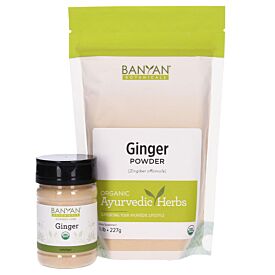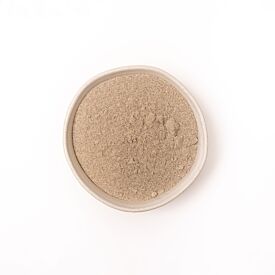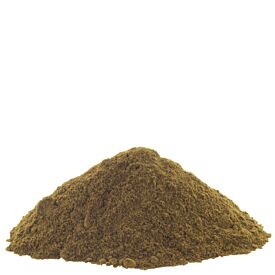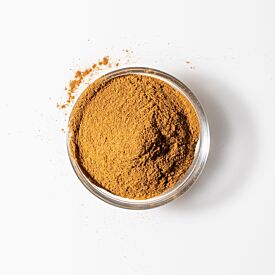Summer Recipe: Kale Quinoa Salad with Zesty Vinaigrette
Summer is here—time for fresh salads and lighter meals that will cool the body and keep digestion strong. This is a delicious recipe for summer that every dosha will love! Packed with nutrients from kale, quinoa, and avocado, this superfood salad is nourishing and satisfying, without feeling overly heavy.
If you’re a vata predominant constitution and follow the guidelines of an Ayurvedic diet, you know that salad can be too light and cooling for you to digest well. You may be thinking, “Kale…I can’t even!” But the following preparation tricks will make kale easier to digest and more enjoyable to eat.
First, discard the tough center vein of each leaf because it’s too much roughage! Second, finely chop the leaves—life is too short to be spent endlessly chewing kale. Third, use a dressing that contains an acid, such as lime juice, lemon juice, or vinegar. Acid breaks down the tough fibrous leaves, making the kale softer and easier to digest.
Still not convinced? This zesty tamari-sesame vinaigrette will add irresistible pizazz to your salad and balance the energetics of the ingredients, making it an ideal summertime meal for all doshas. (If you don’t already know your dosha, you can take Banyan’s free dosha quiz.)
A Look at the Ingredients
Kale belongs to the cabbage family. It is low in calories, high in fiber, and packed with vitamins and minerals. A single cup of chopped kale contains over 100 percent of the recommended daily value of vitamins A, C, and K, and delivers 25 percent of the recommended intake of manganese. It has been referred to as a “king of super healthy greens.”1
From an Ayurvedic point of view, kale is cold, dry, light, mobile, rough, bitter, and astringent. Kale balances pitta and kapha. It moves energy downward and inward and is beneficial in supporting peristalsis, suppressing the appetite, reducing excess heat, supporting healthy blood sugar levels, and cleansing and nourishing the blood. It is considered alkalizing and sattvic.
Quinoa is a vegetable (sometimes called a pseudo-cereal grain) related to beets and spinach. It is gluten-free, high in protein, and one of the few plant foods that contain sufficient amounts of all nine essential amino acids. It is also high in fiber, magnesium, B vitamins, iron, potassium, calcium, phosphorus, vitamin E, antioxidants, and heart-healthy oleic acid and alpha-linolenic acid.2
From an Ayurvedic perspective, quinoa is light, cold, and sweet. It is alkalizing and balancing to vata, pitta, and kapha. It is considered a tonic for the blood, kidneys, and muscles.
Avocados are a nutritious fruit that are a good source of potassium, fiber, heart-healthy fats, folate, vitamin K, vitamin C, vitamin B6, and pantothenic acid.3 The Aztecs believed the fruit provided strength and promoted fertility for both men and women.4
From an Ayurvedic perspective, avocados are heavy, oily, soft, sweet, and slightly astringent. They are balancing to vata and pitta. Avocados move energy downward and inward and are grounding, satiating, nutritious, and alkalizing.
When you blend all of these ingredients, along with a little crunch from the seeds, a hint of sweetness from the currants, and a drizzle of the flavorful, bright vinaigrette, you’ve got a new favorite summer meal.
Quinoa Salad Recipe with Kale and Zesty Vinaigrette
Serves 4
Ingredients:
Salad
- 1 bunch red kale, veins discarded, rinsed and finely chopped
- ¾ cup rainbow quinoa, rinsed
- 1 avocado, peeled and chopped
- ¼ cup pumpkin seeds
- ¼ cup sunflower seeds
- ¼ cup currants
- 2 tablespoons white sesame seeds
- ½ teaspoon mineral salt
Tamari Sesame Vinaigrette
- Juice of ½ an orange (about ¼ cup)
- 3 tablespoons rice vinegar
- 2 tablespoons tamari
- 1 tablespoon honey
- 1 tablespoon sesame oil
- 1 tablespoon sunflower or safflower oil
- ¼ teaspoon pippali powder
Directions:
Cook the quinoa. In a small pan, combine the quinoa with 1¼ cups water and ½ teaspoon salt. Bring to a boil, then reduce heat, cover, and simmer for 15 minutes. Remove from heat, stir, and then cover and let rest for 15 minutes. Remove the cover and allow to cool to room temperature. (This can also be made in advance and stored in an airtight container in the refrigerator for up to 24 hours).
Make the vinaigrette. Whisk together all the vinaigrette ingredients in a glass jar.
Assemble the salad. In a large bowl, combine the kale, quinoa, avocado, pumpkin seeds, sunflower seeds, currants, and sesame seeds. Pour the vinaigrette over the salad and toss until the leaves are well coated.
References
1 Gunnars, Kris. “10 Health Benefits of Kale.”Healthline, June 29, 2018. https://www.healthline.com/nutrition/10-proven-benefits-of-kale.
2 Gunnars, Kris. “11 Proven Health Benefits of Quinoa.” Healthline. June 28, 2018. https://www.healthline.com/nutrition/11-proven-benefits-of-quinoa.
3 Ritz, Taylor A. “The Aztecs: A History Ripe with Avocados.” AvoSeedo, August 27, 2019. https://www.avoseedo.com/the-aztecs-a-history-ripe-with-avocados.
4 Dreher, Mark L., and Adrienne J. Davenport. “Hass Avocado Composition and Potential Health Effects.” Critical reviews in food science and nutrition. Taylor & Francis, May 2, 2013. https://www.ncbi.nlm.nih.gov/pmc/articles/PMC3664913.













